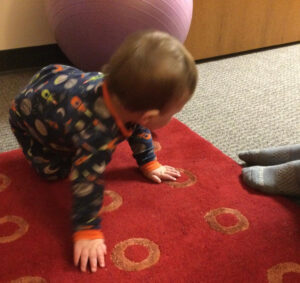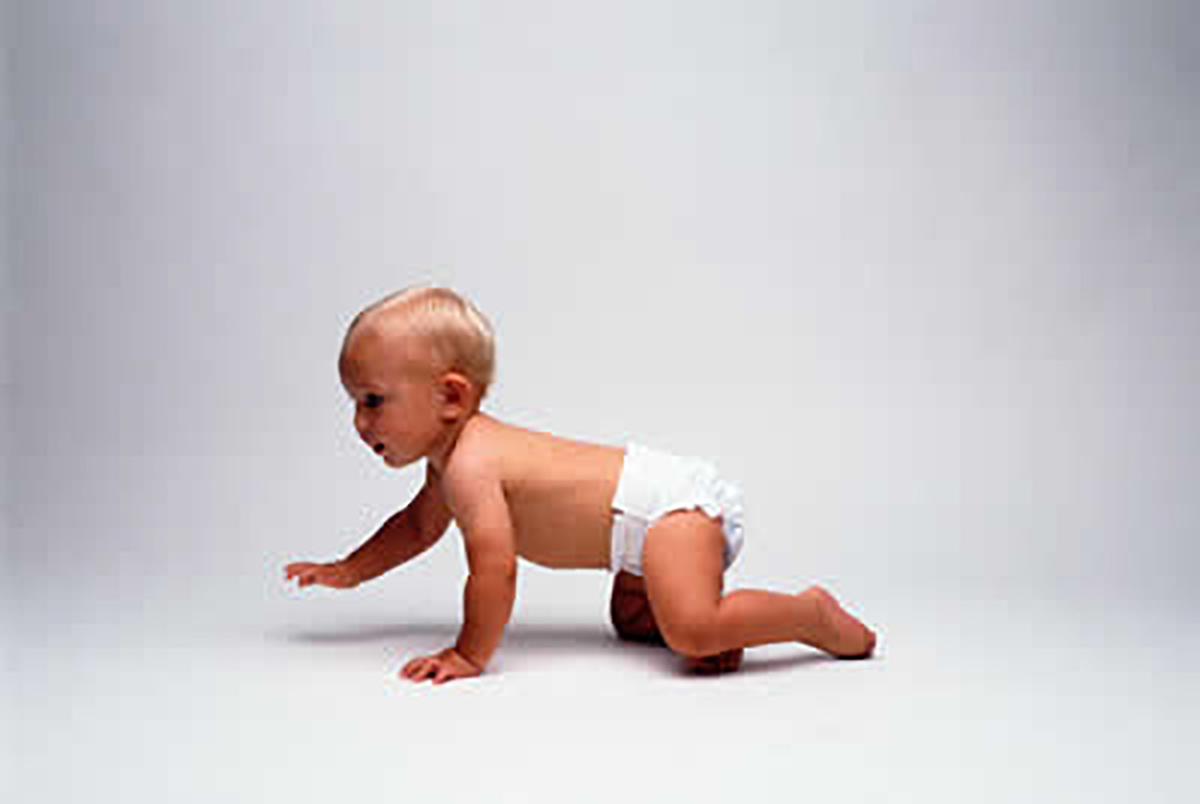Directionally Challenged? Your Early Movement Holds a Key
The theme for this week …
Yes, we work with little ones too. They are learning to be active, and being active helps them learn! Crawling is a well-known milestone in infant development, and for some it doesn’t quite come together. Does crawling still matter? Research says yes! Read on …
Crawl now so your teen driver has spatial awareness later
Crawling is the foundation for understanding how to get around in our surroundings. From crawling, babies learn where they are, where an object of desire is, and how to navigate getting to it.
This early locomotion is key for developing spatial problem solving strategies, such as creating a path and bypassing obstacles.
The more variation to the crawling environment, the richer the learning.
Developmental research
In this excerpt of the 1989 foundational book “Child Development” by Slater and Bremmer, you can follow a step-by-step discussion of how crawling relates to other aspects of development.
Some highlights: Crawling is a key stage for more than core and limb coordination development. Other aspects of cognitive and language development derive from crawling:
- Vocabulary and conceptual language: We need to explore the environment via crawling to develop the internal meaning to the concepts of near/far, up/down, around, in front/behind.
- Internalizing environmental relationships: Before the ability to search is enabled by crawling, the objects viewed are just images, similar to us looking at a screen.
- Making mistakes is part of the process! By navigating, getting disoriented and trying again, the baby begins to make note of environmental clues related to success. This enables repeatable success.
How can Bridging® play a role in crawling?
Over the years we’ve helped many infants overcome the hurdles to crawling. They often have had an unusual start to life and weren’t able to put together some of the precursor micromovements.
Why would a little one need help moving?
The most common reasons we find for crawling challenges are as follows. Each of these inhibits some essential early life transitions of the core and limbs:
- Preemie/NICU stay
- Twin, multiple
- Torticollis
- Early surgery to correct congenital or genetic issue
- Early breathing illness (RSV)
- Colic, or sleep dysregulation
For each of these, Bridging® can help, and, best yet, without exercises for you to do at home.
Insight of the Week from Becki
We often get asked how young can we start Bridging® work, and people are surprised to find that we have worked with little ones as young as one week old. As intrinsic coordination and regulation fall into place, parents breathe a sigh of relief, and begin to enjoy the joys of raising their children!
That’s what happened for Ryan’s parents. The story of Ryan is so wonderful, yet originally so filled with worry from parents and grandparents.
Before I get into the story about Ryan, let’s go over some general reasons why we often meet little ones.
What does a session look like?
If you have seen adult sessions on our YouTube channel it might be hard to imagine how we translate this to babies. In reality, the Bridging® Technique was developed with children. We had to translate work with kids to the adults!
In our sessions with babies, we are assessing the following:
- Core: Is there continuity and cohesiveness in how the baby’s body moves?
- Limbs: Is there an ease and flow to how all the parts of each limb move?
- Whole: Do the limbs and core have specific symmetric relationships which create a sensory midline (right/left) and upper/lower?
- Head/Core: Does the core support and interact with the head symmetrically?
What changes and how quickly?
The amazing aspect of working with babies is how quickly they change. It really is as if their muscles know how to work together but got off track. When a little wiggle or guidance gets the muscle movements back on track, away they go! (Literally!)
Then what? Do I have to learn exercises to do at home? When do we follow up?
The cool part of working with infants and toddlers is they do much of their “homework” via natural play.
Also, we follow a detailed series of developmental relationships noted in the HELP (Hawaii Early Learning Profile) to figure out which relationships are stuck, and what to look for next.
Parents often bring their little ones back monthly or quarterly with each subsequent milestone for some fine-tuning.
Stories from our sessions … Ryan’s torticollis, and family’s worry!
 In this week’s client story, we meet Ryan and his mom, Laura. She is a nurse and has been on top of every detail of his development, including getting help for his torticollis. They were doing PT exercises morning, noon, and night with little change. So frustrating for a new mom!
In this week’s client story, we meet Ryan and his mom, Laura. She is a nurse and has been on top of every detail of his development, including getting help for his torticollis. They were doing PT exercises morning, noon, and night with little change. So frustrating for a new mom!
After their first Bridging® session with us, he was a calmer, more relaxed baby. And so was everyone else!
His army crawl changed to regular four-point crawling within days of his session. He most recently has been pulling up and starting to walk around!
What happened to Ryan, and when?
Micromovement disrupters
What’s happened to Ryan, and when?
- Birth/Early life: Born with torticollis.
- Injury/Accident: None.
- Medical procedures/surgeries: None.
- Illness: None of note.
How did Bridging help Ryan at different stages?
Goal: Help the core and head center so development can get on track
What did we find? In general, his core movements were mismatched and a little twisted. This made it challenging for limbs, core, and head to construct more complex ways of working together.
What did we do? Holding him in a comfortable position we started rocking and guiding his muscles into the missing directions, so he had left/right balance to his core. His head, arms, and legs had an easy time figuring out the next steps on their own.
Each time we meet (every 2-3 months as he masters new skills) we are refining the movement relationships between his core, head, arms, and legs.
As arms, legs, and core grow larger and longer, it challenges his existing skills, so he periodically benefits from fine-tuning.

